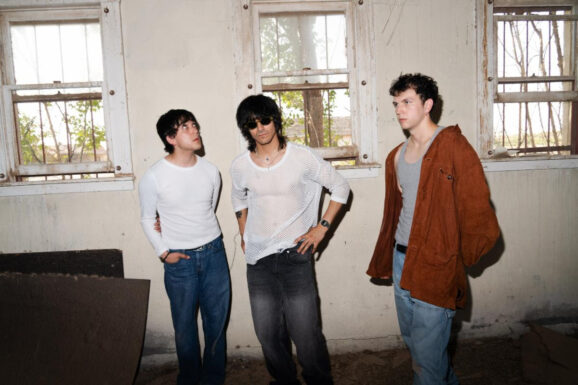With the hindsight of a half-century, Neil Young’s On The Beach (released 7/19/74) stands on its own terms more forcefully than either of its two companion pieces in ‘The Ditch Trilogy.’ Whereas the live Time Fades Away of the year prior was a direct response to audience expectations based on the success of the preceding blockbuster, Harvest, and 1975’s Tonight’s The Night was an exorcism of demons following the untimely deaths of individuals close to Young, on this second of three decidedly unconventional pieces of work, the iconoclastic Canadian staked out a territory of his own in both creative and personal terms.
Only two cuts of the total eight are accessible to some degree, and they both appear right in sequence at the very outset of the album. Neil rarely, if ever, presented such a clear-cut declaration of intent as “Walk On,” but he balances its equanimity in the face of conflict with the slightly jaunty gait of its performance. Ben Keith on slide guitar and vocal, plus the Crazy Horse rhythm section of bassist Billy Talbot and drummer/vocalist Ralph Molina, further imbues the collective motion with a carefree air that belies the certitude of the author’s position.
Reminiscent of Young’s vintage solo work but without the lone acoustic guitar or grand piano with harmonica, “See the Sky About to Rain” is a much more forlorn piece of work. Still, it’s brightened by the author’s playing on Wurlitzer electric piano as well as the stalwart drumming of the late Levon Helm of The Band (the latter mythic outfit had moved west with the rest late the prior year and its bassist Rick Danko also appears here on “Revolution Blues”).
The fade-out of the tune leaves the remainder of On The Beach in the deeply introspective, solitary atmosphere fittingly encapsulated by the title track. The mix of resignation and acceptance there and on “Motion Pictures” blossoms fully on the nearly nine minutes of the final cut, “Ambulance Blues.” Betraying no little world-weariness he buttresses with a sanguine attitude; Young delivers a seemingly stream-of-consciousness litany of observations on the machinations of the world at large (and its ramifications on him).
Rusty Kershaw uses his fiddle there to cauterize psychic wounds, both professional and emotional, and, as a result, the number rings as true now as it did five decades ago (and in many more respects than simply its final verse). Still, as estranged from the world at large as Neil sounds there, he retains his self-awareness, stating as he does: ‘…I’m deep inside myself, but I’ll get out somehow…’
In the meantime, the idiosyncratic artist clearly felt compelled to write and record the discordant likes of “Vampire Blues.” Sluggish as it sounds, this performance nonetheless represents the man’s first expression of environmental awareness. The aforementioned “Revolution Blues” is more topical but taken at an edgy pace, as if Young had become more than a little impatient with the privileged (who generally remain nameless but may very well also include himself).
His electric guitar solos on the latter two cuts are most definitely not the pointed likes of those he played with Buffalo Springfield or the early days of Crazy Horse, much less similar his exchanges with Stephen Stills on stage with their two famous friends. And along those same lines, during the wan reading of an overly-verbose piece called “For The Turnstiles,” a combination of dobro and banjo sets a dolorous mood that mirrors this album’s desolate cover images (outtakes of which are decidedly more lighthearted).
Neil Young knew he had an audience for On The Beach and was probably more curious than concerned about the response. And he hardly cared to resolve the apparent contradictions of his position(s) either. On the contrary, he chose to embrace the paradoxes, a significant part of which stance was reuniting with Crosby, Stills, and Nash for the first time in four years to embark on a stadium tour the very same summer this fifth studio album of his was released.
The small handful of selections from this effort in setlists from those shows (the mammoth jaunt is chronicled on the 2014 live album CSNY 1974) was the only live support Neil gave to this work, that is, apart from an impromptu one-off performance at the Bottom Line in New York. Widely circulated in ensuing years, the audience recording of that appearance–its audio restored and remastered– was eventually released in 2022 as Citizen Kane Jr. Blues 1974 Live at The Bottom Line, part of the Official Bootleg Series inaugurated that same year.
Thankfully, the heightened attention given to this period of Neil Young’s career hasn’t negated its essentially inscrutable tone in the fifty years since it came out. Quite the contrary, in fact, because, like its two counterparts, On The Beach presents some (uncomfortably?) candid insights into art, commerce, and the after-effects of celebrity that few of this man’s peers (except perhaps the Who’s Pete Townshend) have ever dared offer.











